
現象をありのままに捉えるためにはどうしたらいいのか?
前回の記事では、現象をありのままに観察することの難しさと、自分の認知の限界についてお話をしました。今回の記事では、どのようにすれば、そのような難しさや限界があるとしても、ありのままを観察することに近づけるのだろうかということを考えたいと思います。
今回の記事の位置付けとしては、前回から引き続き、改善・イノベーションの2つ目のプロセスである「メタ意識の活用と現象の観察」に関する内容となります。
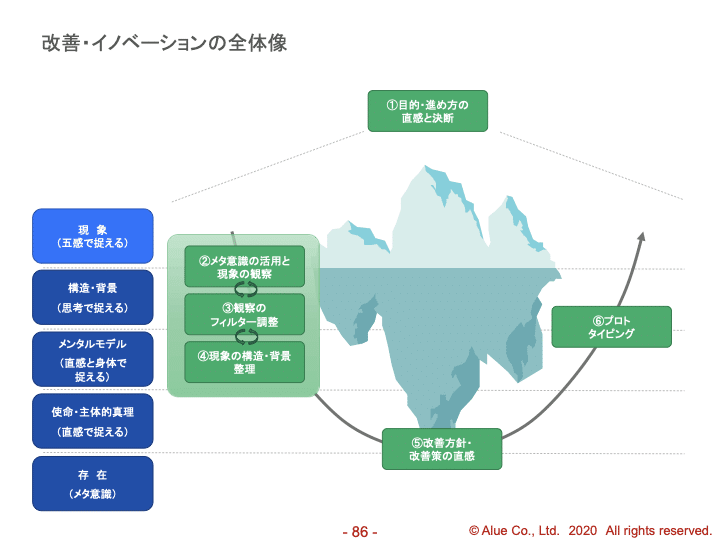
複数の観察モードを持つ
ありのままを観察するときに、大切になることは複数の観察モードを持つことです。
「複数の観察モードをもつというは、観察する側の意図が入り込んでおり、ありのままとは言えないのではないか?」
このような疑問を持たれる方もいらっしゃるかもしれません。おっしゃる通り、観察モードを意図的に変えていくという時点で意図が入り込んでいますね。
しかし、前回の記事の「群盲象を評す」という話を思い浮かべてください。いずれにせよ、一人が認識することには限界があるということを前提とすれば、複数の観察モードをもつことによって、ありのまま(象そのもの)を捉えることに近づいていきたいと考えることもできるのではないでしょうか。
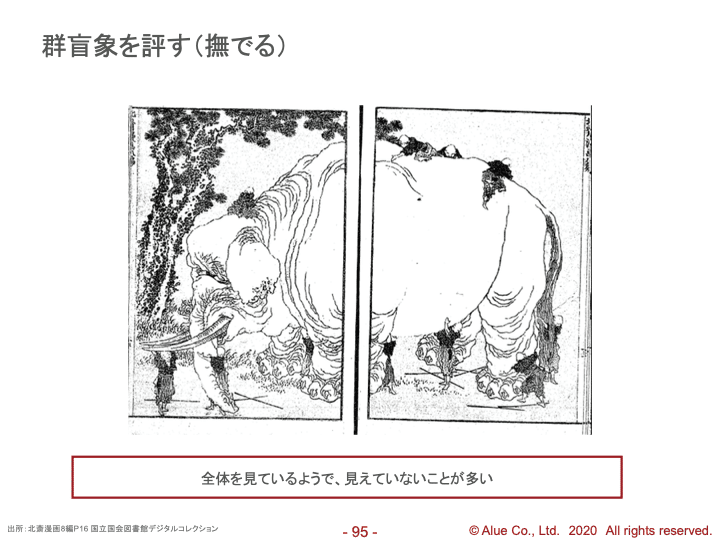
認識するということにはそもそも限界があるのだから、限界があるもの一つに頼るのではなく、複数の方法を持ち合わせようという発想に近いですね。
では、どのようにすれば複数の観察モードをもつことができるのかについてお話しします。
まずは、2つの視点を意識します。喜怒哀楽のある自分自身の視点と、その自分を含めた事象全体、ストーリー全体を見守るメタ的な視点です。映画のメタファーを用いれば、俳優視点と映画監督の視点です。
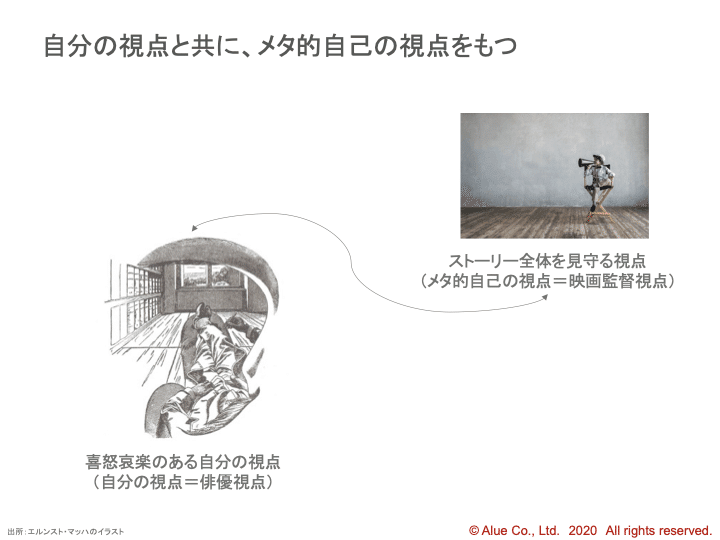
例えば、自分が提案した内容をお客様に納得していただくことができて、自分が嬉しいと感じているとします。「お客様が深くうなづいてくれたから、嬉しかった」という具合に感じているのは自分自身の視点(俳優視点)です。それを少し俯瞰した立場から見ると、「自分という営業担当者とお客様の間で共感が生み出されていくプロセス」という見え方になるかもしれませんね。これがメタ的な視点(映画監督の視点)です。
3つの観察モード
この俳優視点と映画監督の視点を用いて、複数の観察モードを持ちます。
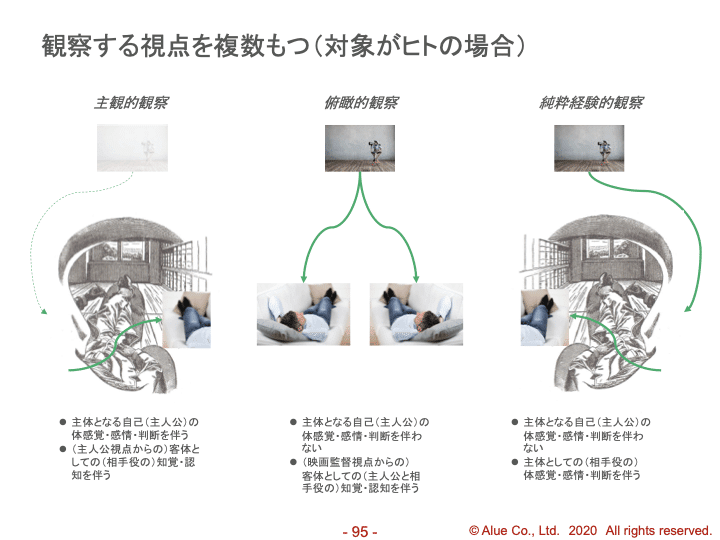
一つ目の観察モードが主観的観察です。これは、自分という俳優視点であり、自分の体感覚や感情や判断を伴った観察のモードです。
二つ目の観察モードが俯瞰的観察です。これは、自分を含めた事象全体を俯瞰する映画監督の視点であり、自分の体感覚や感情や判断を伴わないものです。といっても、自分自身の感覚と完全に切り離すことは難しいので、「なるべくその状態に近づくように努力した状態」とご理解いただければと思います。
ここまでは、先ほどの俳優視点と映画監督視点と同じですが、実はもう一つの観察モードがあります。この観察モードの感覚が掴めると、現実の捉え方の質感が変わってきます。
その三つ目の観察モードは、純粋経験的観察です。純粋経験とは、哲学者西田幾多郎の言葉です。
純粋経験(西田幾多郎による定義)
豪も思慮分別を加えない、真に経験そのままの状態
俯瞰的視点と同様、あるいは、それ以上に純粋経験を実践するのは難しいことです。前回の記事の最初のりんごの例を思い返してください。あの写真をみたその瞬間に「りんご」という判断をしてしまいますね。りんごの例における純粋経験というのは、「りんご」という判断を加える前の「赤い光」をそのまま捉えている状態と言えばいいでしょうか。
このような捉え方をすることは簡単ではありませんが、判断することをなるべく保留することによって、「なるべく純粋経験的に観察することを努力した状態」として、この純粋経験的観察をご理解いただければと思います。

このように、純粋経験的観察というのは、その観察の対象そのものに憑依をして、その観察対象の主観になりきって捉えていくというイメージになります。その対象が人であれば、「その人の主観的事実そのものを感じる」ということになります。また、対象がモノであれば、「そのモノになりきる」というイメージでしょうか。
以前の記事で、戦略ストーリーを創出する際に大切となる「顧客の現実を知る」というテーマでお話ししたときに、エスノグラフィーをするということをお伝えしましたが、これも純粋経験的観察の一つです。
主観的観察をするだけではなく、映画監督視点から俯瞰的観察をすると共に、他者からみた主観的事実を純粋経験的に観察すること、事象そのものを判断を保留して純粋経験的に観察すること、という複数の観察モードを持ち、それらの観察を総合して、「群盲象を評す」における「象」にあたる「事象そのもの」を捉えようとするというイメージになります。
複数の観察モードをもつことの大切さ
私自身、複数の観察モードを持つことの大切さを痛感した出来事があります。
以前にもお伝えしましたが、当社では法人向けの社員育成サービスを提供していますが、感染症拡大をきっかけに、オフラインでの実施が難しくなったため、一気にサービスのオンライン化を進めました。そのスピード感はよかったのですが、業務が増えた上に業務プロセスが複雑になったことで、現場の疲弊感や、新規入社者のオンボーディングの難しさなど、様々な問題が表出していました。
私の目から見れば、エンゲージメントスコアが下がったり、新規入社者が当社の業務に慣れるまでの時間がかかるという事象が発生しており、それは業務プロセスが複雑になってしまったからだという具合に見えます。(主観的観察)
この主観的観察だけで判断しようとすると、複雑になった業務プロセスを清流化すればいいだろうという発想になります。そして、私自身、実際にそのようなプロジェクトを立ち上げました。
しかし、そのプロジェクトを立ち上げて、プロジェクトメンバーと話をしている中で、自分が見えていないことがあることに気づきます。それは、私が「業務が複雑になったので、それを清流化しましょう」という話をしたときに、その業務を実際に担当してくれているKさんの反応が良くなかったからです。

業務が清流化すれば、Kさんの業務も楽になるはずなのに変だなと思うと共に、これは何か自分が見えていないことがあるに違いないと確信します。
そして、Kさんになるべく憑依をして、Kさんがどのような感じで業務をしているのか、複雑化する業務に対応してきたのか、それをどのように改善しようとしているのかを感じ取るようにしました。私だけではなく、プロジェクトメンバー全員で、「Kさんの困りごとを解決しよう」ということを合言葉に、Kさんの主観的事実をありのままに捉えることにしました。(純粋経験的観察)
そのプロセスを経る中で、当初自分が見てきたことは全体の一部にしか過ぎず、自分が見えていなかった大小さまざまな課題があることに気付き、それらの課題が相互に絡みあっていることに気づきます。(俯瞰的観察)
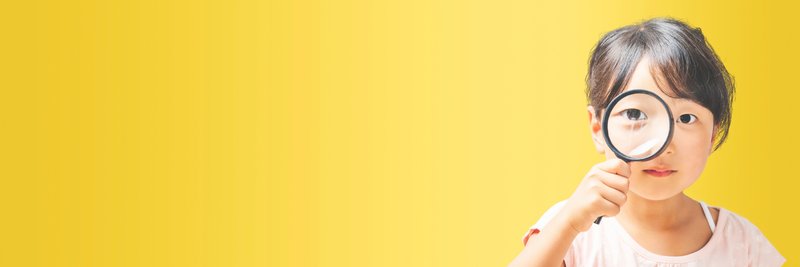
どの観察モードが正しいとか、正しくないという話ではありません。どれも事実です。そして、これら複数の観察モードを通じて、そこはかとなく見えてくるものが、「群盲象を評す」における「象」にあたるものだと言えます。
今回の記事では、改善・イノベーションの二つ目のプロセスである「メタ意識の活用と現象の観察」についてお話ししました。次の記事では、三つ目のプロセス「観察のフィルター調整」についてお話しします。
本日の問いとなります。(よろしければ、コメントにご意見ください)
・みなさんの経験の中で、純粋経験的観察(相手になりきる、物事そのものになりきるようなイメージ)に近い経験があるとすれば、それはどのような経験でしたか?
・主観的観察だけではなく、俯瞰的観察や純粋経験的観察といった複数の観察モードをもつことで、みなさんの仕事や生活において、どのようないいことがありそうでしょうか?
How can we see phenomena as they really are?
In my last article, I talked about the difficulty of observing phenomena as they are and the limitations of our own cognition. In this article, I would like to consider how we can come closer to observing things as they are, even with such difficulties and limitations.
As a continuation of the previous article, this article is about the second process of improvement and innovation, which is the use of meta-consciousness and observation of phenomena.
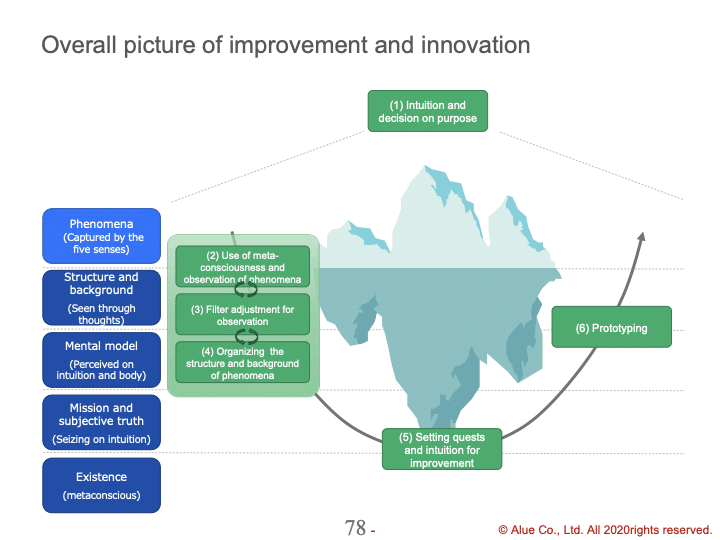
Have multiple observation modes
When observing things as they are, it is important to have multiple modes of observation.
"Doesn't having multiple modes of observation mean that the intention of the observer has entered the picture and it is not as it really is?"
Some of you may ask this question. That's right, when we intentionally change the mode of observation, we are introducing our intention.
However, think of my previous article, "The Blind Men and the Elephant". In any situation, if we assume that there is a limit to what one can recognize, we can try to get closer to capturing the elephant as it is (the elephant itself) by having multiple modes of observation.
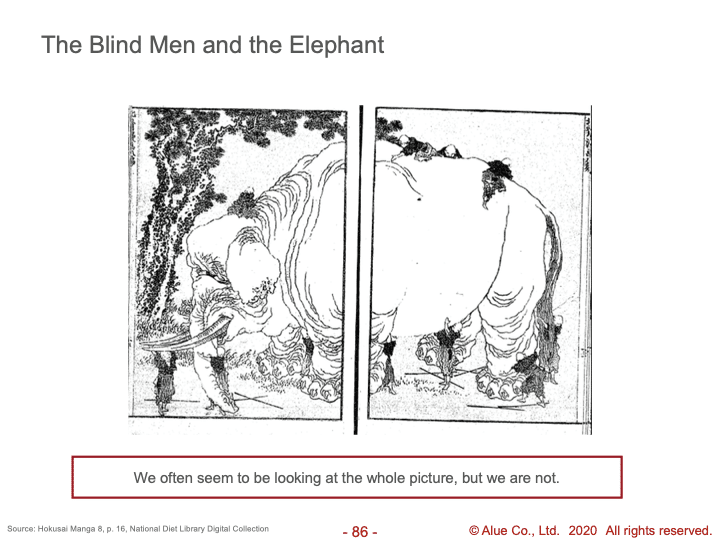
It's almost like the notion of having multiple ways to perceive things, rather than relying on one thing that has a limit, since perception has a limit in nature.
Now let's talk about how we can have multiple modes of observation.
First, we need to be aware of two perspectives. One is our own point of view, with its own joys and sorrows, and the other is a meta point of view, looking at the whole event, the whole story, including ourselves. To use a movie metaphor, these are the actor's point of view and the movie director's point of view.

For example, let's say you feel happy because you were able to convince the customer of what you proposed. It is your own perspective (the actor's perspective) that "you are feeling happy because the customer nodded deeply."
If you look at it from a slightly bird's eye view, you might see it as "the process of creating empathy between you, the salesperson, and the customer." This is the meta-perspective ( movie director's perspective).
Three observation modes
Using this actor's perspective and the movie director's perspective, we have multiple modes of observation.
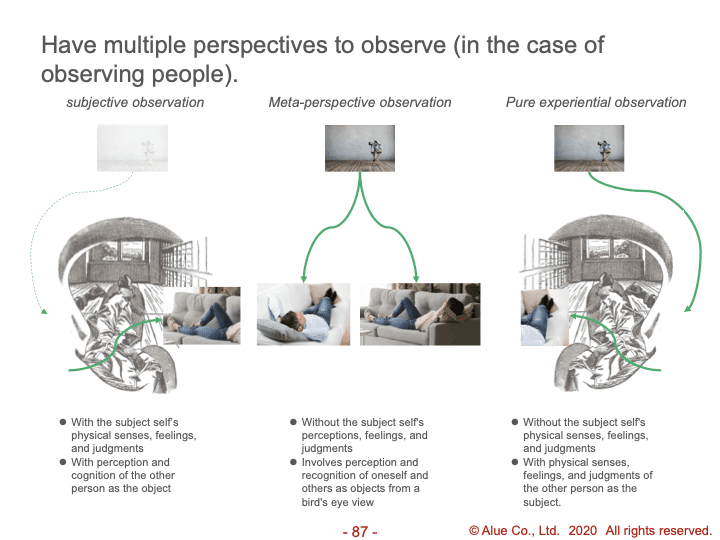
The first mode of observation is subjective observation. This is the mode of observation where we are the actor's point of view, with our own physical senses, emotions, and judgments.
The second mode of observation is meta-perspective observation. This is a movie director's point of view that overviews the entire event, including oneself, without one's own physical senses, feelings, or judgments. However, it is difficult to completely separate it from our own senses, so it can be understood as "a state where we try to get as close to this state as possible."
Up to this point, it is the same as the actor's point of view and the movie director's point of view mentioned earlier, but there is actually another mode of observation. Once we get a sense of this observation mode, the quality of our perception of reality changes.
The third mode of observation is pure experiential observation. Pure experience is a term given by the philosopher Kitaro Nishida.
Pure experience (as defined by Kitaro Nishida)
The state of being truly as one experiences it, without any thought or judgment.
Translation by the author
It can be just as difficult, or even more difficult, to practice pure experience as it is to practice meta-perspectival observation. Think back to the first apple example in my last article. The moment we see that picture, we make the decision that it is an apple, don't we? Pure experience in the apple example is the state of seeing the red light as it is, before making the judgment that it is an apple.
It is not easy to see it this way, but by withholding judgment as much as possible, I hope you will understand this pure experiential observation as "a state in which we strive to observe as purely experientially as possible.
In this way, purely experiential observation is the image of becoming the object of observation itself and perceiving it through the subjectivity of the object. If the object is a person, it means to "feel the subjective fact of the person itself. If the object is a thing, it is like "becoming the thing."
In a previous article, when I talked about "knowing the reality of customers," which is important when creating strategic stories, I mentioned doing ethnography, which is another form of pure experiential observation.
In addition to making subjective observations, we also have multiple modes of observation: meta-perspective observation from the movie director's point of view, purely experiential observation of subjective facts from the point of view of others, and purely experiential observation of the event itself, suspending judgment.
The importance of having multiple observation modes
I myself had an incident that made me realize the importance of having multiple modes of observation.
As I have mentioned before, we provide an employee training service for corporate clients, but the spread of infectious diseases made it difficult to implement the service offline, so we quickly moved the service online. The speed with which we did so was good, but as the number of tasks increased and the business processes became more complex, various problems surfaced, such as fatigue in the frontline and difficulty in onboarding new employees.
From my point of view, it seems that engagement scores are dropping and new employees are taking longer to get used to our business because of the complexity of our business processes. (Subjective observation)
If I make a decision based on this subjective observation alone, I think it would be a good idea to streamline the complicated business process. And I myself have actually launched such a project.
However, as I launched that project and talked to the project members, I realized that there were things I was not seeing. What made me realize this was that when I told them that the work had become complicated and that we should make it cleaner, K-san, who was actually in charge of that work, did not react well.
I thought it was strange that K-san's work would be easier if her business could be streamlined, and I was convinced that there must be something I was not seeing.
Then, I tried to become K-san as much as possible, and tried to get a sense of how she was doing her work, how she was coping with the increasing complexity of her work, and how she was trying to improve it. Not just me, but all the project members decided to take K's subjective facts as they were, under the slogan, "Let's solve K-san's problems first." (Purely experiential observation)
Through this process, I realized that what I had initially seen was only a part of the whole, and that there were various issues, large and small, that I had not seen, and that these issues were intertwined with each other. (Meta-perspective observation)
We are not talking about which observation mode is right or wrong. They are all facts. And through these multiple modes of observation, we can say that what comes into our view is "the elephant" in "The Blind Men and the Elephant."
In this article, I talked about the second process of improvement/innovation, "Use of meta-consciousness and observation of phenomena. In the next article, I will discuss the third process, "Filter adjustment of observation."
Here are the quests of the day. (If you'd like, please share your thoughts in the comments.)
・What experiences, if any, have you had that were close to purely experiential observation (i.e., becoming the other person, becoming the thing itself)?
・What are the benefits of having multiple modes of observation, such as meta-perspective observation and purely experiential observation, as well as subjective observation, in your work and life?
Bunshiro Ochiai
この記事が気に入ったらサポートをしてみませんか?
